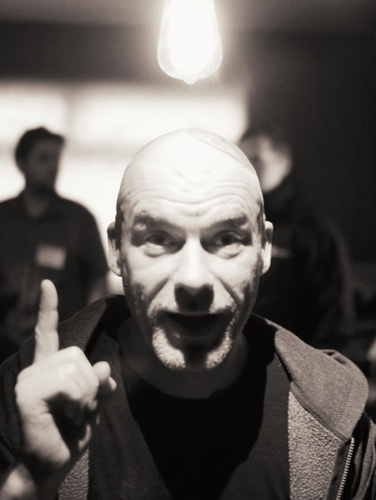
HorrorCultFilms stalwarts Bat and Ross are thrilled to bring you this EXCLUSIVE interview with Britain’s answer to Rick Baker and Tom Savini: multi RTS and BAFTA award winning FX maestro, NEILL GORTON. We quizzed Neill on his FX work on major hit British TV programmes Dr Who, Being Human and Jekyll as well as his directorial debut with horror film anthology, Bloody Cuts.
Bat: When did you get involved with FX and how did you learn to create such masterpieces?
Neill: I was just a fan of FX and horror and sci fi movies when i was a kid and thought that it looked like an interesting career. I’m from that Star Wars generation of the late 70’s which then evolved in to the 80’s video horror boom so I grew up watching “American Werewolf in London” and “Creepshow” and other classics of that generation. I just started reading about people like Rick Baker, Stuart Freeborn and Tom Savini and wanted to be like them. I’d make-up my school friends with scars and wounds and slowly progressed to more advanced prosthetics until I’d built a portfolio of work I thought was good enough to show around. My first job was a couple of weeks working with Chris Tucker who did the prosthetic FX for “The Elephant Man” and “Company of Wolves”. From there I landed a job with Bob Keen who had just completed work on the first “Hellraiser”. I was 17 at the time and went on to work with Bob for several years on films such as “Hellraiser II Hellbound” and “Nightbreed”.
Bat: You’ve worked on some high profile movies such as From Hell, Saving Private Ryan, Thor, Hellraiser 2 and Lara Croft Tomb Raider. However my personal favourite is a little known film by one of Britain’s most prolific directors. Can you tell us a bit about your role on Ken Russell’s Lair of the White Worm and what it entailed?
I built the giant version of the worm that swallows Amanda Donohoe at the end. The head was about 8ft high and on a rig that made the jaws open and close. I also did other on set duties including being a puppeteer on the worm that is wrapped around the vision of Christ on the cross. I was behind the wall with my arm stuck through and in to the head of the worm which was a hand puppet. I spent a lot of time trying not to knock the worm head against the head of the bloke playing Jesus because the Art Department had kindly made his crown of thorns out of actual thorns so every time the worms head knocked in to him it would stick in to him. Now that’s real method acting!
Bat: What are your thoughts on the rise of CGI? Personally I love nothing more than seeing make up, animatronics and prosthetics rather than the overused, unrealistic CGI which seems to swamp modern day cinema.
Used correctly it’s great but that’s like any new technology. It’s funny because everyone just assumes it’s taken work away from us but quite the opposite has happened. The reality is so many of these movies and TV shows that require prosthetics are made ‘because’ of CGI and digital FX. These technologies have made it affordable to do those films and TV shows, which would have been prohibitively costly to do before, so it’s generated more work because when they start making those productions they still realise that it’s much more cost effective to use practical FX for a certain amount of the work. Obviously Bad CGI is completely horrible to look at and when it’s done in a place were practical effects could have achieved the same then it’s frustrating but I also used to see some bloody awful creature FX done practically so it really is swings and roundabouts.
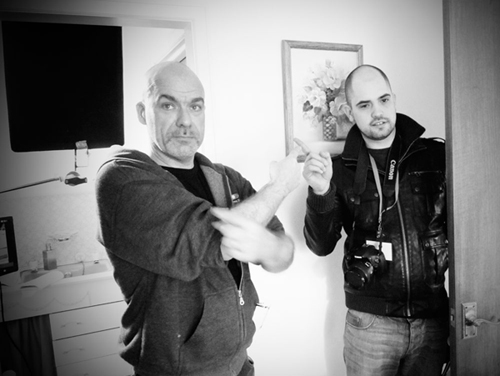
Ross: The list of TV Programmes that you have been involved in is unbelievable, do you need to pinch yourself at times to make sure that you are not dreaming? I mean Torchwood…Dr Who, Being Human, The Sarah Jane Adventures are just a few on the list and do you know how jealous I am that you have been on those sets? (laughs)….
Bat: When hired for TV or film to create monsters or apply make-up, do you have a brief you must work to or are you left to your own creative devices and imagination?
Yes I do pinch myself frequently – it’s quite pleasant :0) The process generally is; we get the script and the script has some form of description of what it is we need to build. If Doctor Who then it’s something like “8ft green baby faced alien” and subsequently we go off and do doodles and designs that we show to the producers and director until everyone agrees on the one they like. Obviously if you’re re-designign a classic like Davros there’s an established stepping off point but there’s still scope to tweak and refine the classic designs.
[youtube]https://www.youtube.com/watch?v=LBnlfbWPnC0[/youtube]
Ross: One of the episodes of Dr Who in which you were involved with was The Time Of Angels, an episode which had those damn statues in, was you scared to “blink” on set?
I still have the matchsticks in my eyes!
Ross: You crossed the bridges by being fortunate to work with the Two Doctors, on a few episodes with David Tennant and now of course with Matt Smith, I am not going to ask the question “who do you think is the best out of two?” but can you explain what its like working on the same show but in two different eras?
Actually it’s three as I was there for the first of the new era with Chris Ecclestone. I’ve been involved with the show for over 7 years now and was there on the very first day of filming with our space pig! I’m now a veteran being one of the few surviving crew members who has worked on every series. There’s not a lot of difference working on the shows with the different Doctors as all the elements that go in to making it stay pretty much the same back of house whoever is the face at the front.
Ross: Did you help create the water like Zombies in the brilliant The Water of Mars?
Yup, I did those.
Ross: Another show which you have been involved with is Being Human, a series that I am totally in love with.
For a series that probably does not have the highest budget, the Werewolf transformation scenes are really impressive, was it pressure to get all the effects on the show to a real good standard and not seem cheap?
The budget is teeny tiny but the thing that helps is that the transformatiosn can mostly be re-used. There’s little additions and alterations each year but we have a kit fo different body parts that we re-jig for each transformation and just try and find new and interesting ways to shoot them. The great thing with Being Human was that right back on the pilot I managed to persuade the producers not to do any CGI and instead put what little money they had in to the physical effects. I think having real physical transformations in the pilot episode was one of the things that helped sell it and made it something different for audiences and helped it get commissioned.
Ross: On your list of TV Shows is another quality programme in Jekyll, a much underrated classic, its quite good how you managed to make Hyde a complete different character to that of Jekyll without the need of special effects and a stupid mask, how did you manage to come up with that?
That was really just script lead in that it suggested he become a more handsome and virile version of himself so we just played around with adding a squarer jaw and more full and lustruous hair. It was all quiet subtle.
Ross: Also on your CV is work on Little Britain, how different is it working on a comedy show to that of say the tone of Jekyll? Do you approach the FX in a different way?
The key thing is with Jekyll and Being Human for example you need the audience to believe them and not laugh at them. With Little Britain you’ve failed if the audience doesn’t laugh at them!
Bat: You co-own Millennium FX with fellow FX artist Rob Mayer. Can you tell us a bit about what Millennium FX offers?
Incredible and multi award winning special FX and a damn good cup of tea.
Bat: The animatronic gorilla suit you created with Millennium FX is extraordinary. How long roughly does it take to create something like that?
That was a real labour of love and took a year to complete between other projects due to the way it was funded. There’s only a few jobs that you ever get that luxury of time on. Most of our prep schedules these days tend to be a matter of a few weeks.
Bat: Yourself and Millennium FX studio sponsor the brilliant British horror anthology, Bloody Cuts. What inspired you to work with them?
I was approached by Ben Franklin, the producer and creator of Bloody Cuts after they’d made their first film “Lock Up”. I run a school for budding prosthetic make-up artists (www.gortonstudio.com) and Ben thought I might be able to send some students his way to help on the films. Unfortunately, the way things work at the school, the timings didn’t fit for us to be able to do that but I really liked what he was doing with BloodyCuts and offered to help out ourselves. We started by getting one of our technicians James to do the prosthetics for “Stitches” under the supervision of MFX co-ordinator Kate Walshe. On “Prey” our other co-ordinator Karen stepped up and did the prosthetics herself. By now the relationship between us all had been well cemented and I submitted the idea for “Mother Died” which everyone loved and it became the next film in the series. This time the entire MFX team stepped into do the prosthetics leaving me to focus on directing duties.
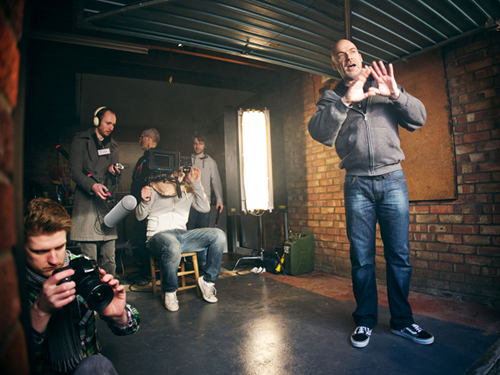
Bat: For Bloody Cuts‘ fourth film, out of a further 9 yet to be filmed, you have taken a more prominent role in what I believe is your directorial debut. What was it like to be in charge of a whole film and how did you use your experience working on sets to help you?
I’ve been doing FX for 25 years and basically I see it as having been in film school for 25 years. I’ve had the honour of seeing directors like (Steven) Spielberg and Ridley Scott work. I’ve been involved at all kinds of levels from tiny budget TV shows such as “Being Human” up to mega budget studio movies such as “The Wolfman“. I’ve spent 25 years absorbing everything I can on and off set and finally get to put it in to practice thanks to BloodyCuts and loved every damn minute of it.
You can watch Neill Gorton’s Bloody Cuts short, MOTHER DIED below.
Thank you to Neill Gorton for taking the time out for this interview and giving us an insight into the enthralling world of FX.
You can visit Millennium FX website www.millenniumfx.co.uk
If you want to take up FX lessons, make sure you visit www.gortonstudio.com
To follow Neill’s work with Bloody Cuts, visit www.bloodycuts.co.uk

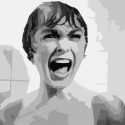
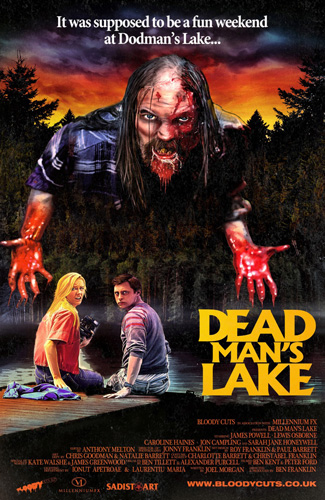
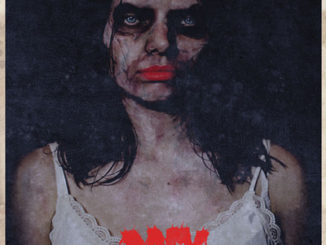

Be the first to comment